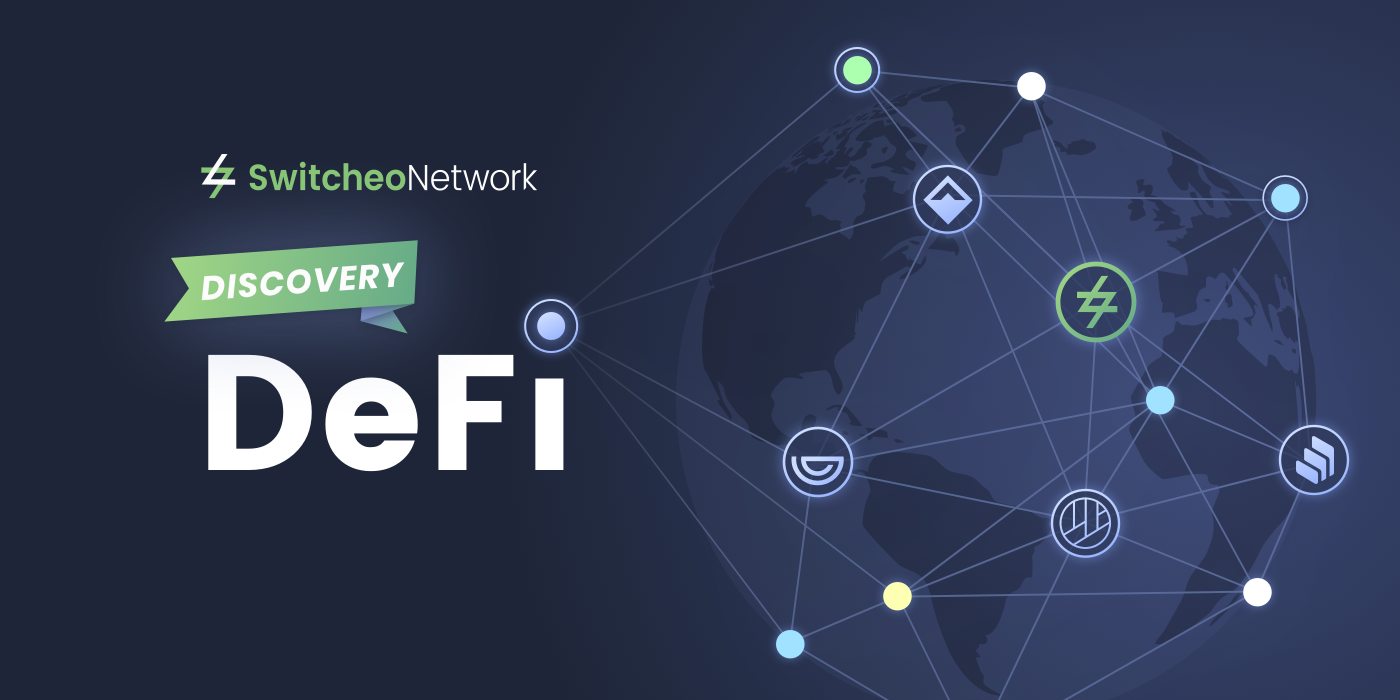“DeFi”, or Decentralized Finance, is a term that you might have seen floating around the crypto-sphere recently. As a young industry rife with buzzwords, you’d be right in being suspicious of the ‘next big thing’.
More than just a catchy phrase, DeFi actually represents a paradigm shift in the way users can access financial products and services.
The Rise of DeFi
DeFi products are built on public blockchains such as Bitcoin and Ethereum. The rise of DeFi stems from the creation of Bitcoin, which kickstarted our movement towards a financial system that would be accessible to everyone.
However, Bitcoin users quickly realized that due to the way Bitcoin was designed, it’s use-case was mostly constrained to simple payment transfers. Ethereum was thus born out of the vision for a form of money that could autonomously execute certain actions — today known as “smart contracts”.
While the first form of smart contracts was generally simple (for example, ERC-20 tokens), the Ethereum community quickly developed more complex contracts such as DAOs (decentralized autonomous organizations), and most recently, DeFi applications.
DeFi applications today fulfill the vision of Bitcoin by allowing complex financial products, such as lending and borrowing platforms like Set Protocol and Dharma (whose creators first coined the term “DeFi”), asset management tools like MelonPort, algorithmic stablecoins such as Dai, and decentralized exchanges (DEXs) such as Switcheo.
Characteristics of DeFi Apps
Although each DeFi product may provide different types of financial functions, all DeFi apps possess one or more of the four key characteristics below, and a fully decentralized DeFi app would fulfill all of these goals completely.
1. Does Not Rely On Trust
The first and most crucial attribute of a DeFi product is that it doesn’t rely on trusted entities.
In a traditional financial system, we often have to rely on trusted entities. For example, we trust our bank to keep our dollars safe and trust the government to not inflate our currency in an unstable manner. This is normally taken for granted by individuals living in first world countries, but there are multiple instances where this trust has broken down across the world, such as the recent hyperinflation in Venezuela.
In a DeFi app, the system does not need to rely on trusted entities as the financial value is securely stored (or transferred peer-to-peer) using smart contracts, which cannot be modified after being created on the blockchain. A DeFi smart contract would also be programmed with certain rules using mathematical/economic models, or game theory to achieve a certain financial characteristic or goal (e.g. a stablecoin).
DeFi smart contracts would also typically be programmed such that each user’s assets would only be controllable with the owner’s private keys in order to achieve this goal.
2. Can Be Accessed By Everyone
The second attribute of a DeFi app is that it is permissionless.
Gatekeepers in traditional institutions like banks can deny their services to customers, while governments can limit their citizens’ access to various financial markets or instruments (e.g. stock market).
On the other hand, since anyone can use widely available cryptographic software to generate private keys and begin interacting with DeFi apps on the blockchain directly, it is hard for 3rd parties to block access to them.
For example, with just an Ethereum wallet, anyone can interact with the Uniswap smart contract on the blockchain by invoking it through any public Ethereum node directly — without registration, or giving personal data to a gatekeeper!
We can see that besides being permissionless, other benefits such as better personal data privacy and quicker onboarding arise.
3. Can Be Verified and Validated By Anyone
The third characteristic of DeFi products is that they’re open and transparent.
Centralized institutions are built upon internal services where transactions are private and only viewable by their personnel. DeFi products, on the other hand, run on public blockchains where data and transactions are typically easily viewable or traceable by anyone.
DeFi products’ codebase is also open-source, allowing anyone with the correct expertise to verify that these products are built to perform as advertised and that they do not have security flaws that could compromise users.
Users of DeFi apps, therefore, benefit from an economic externality, where the “security level” of a DeFi app increases with its age and usage levels because more eyes would have examined it.
4. Cannot Be Shut Down Easily
Finally, a DeFi app cannot be shut down easily as it is decentralized and does not have a single point of failure. This typically means that the entire app’s infrastructure should be distributed across multiple locations and entities.
DeFi apps can do this by running its backend directly on public blockchains (e.g. smart contracts on Ethereum), or sidechains with a large number of incentivized nodes, and hosting its frontend on decentralized filesystems like IPFS.
As long as just a small portion of nodes or actors is able to serve users, the application will still be accessible by users. This makes DeFi apps resistant against shutdown from even powerful actors.
However, as the DeFi space is still in its infancy, not all DeFi apps achieve all four of the above goals. This is because achieving each characteristic typically comes with a corresponding challenge or tradeoff, such as technical complexity or poorer usability by the general public.
The Future of DeFi
There’s a lot to look forward to in the world of DeFi. As the ecosystem develops, we can look forward to even more creative financial products and instruments, and better standardization and interoperability between the various DeFi apps.
One can imagine that in the near future, fully integrated financial management suites can be constructed with DeFi apps “communicating” directly to each other, while fully fulfilling all four characteristics!
Our Role in the DeFi Ecosystem
For us here at Switcheo, we’ve been focused on building user-friendly decentralized token exchanges on multiple blockchains (Ethereum, EOS, and NEO), and we’ve even connected markets across the different blockchains using non-custodian protocols.
If you’d like to find out more about the smart contracts that support Switcheo Exchange, they are open-source and available on Github.
We’ll soon be pushing further on the decentralization of our application through Switcheo Chain. This innovation will enable us to move our trade matching engines to a distributed system of nodes running as a sidechain, completely decentralizing our entire infrastructure.
With so much progress in this space, we hope you’re just as excited as us on the future of DeFi!
Like what you read? Check out these articles that may interest you:
Switcheo Discovery: How Switcheo Exchange Works Part 1
Switcheo Discovery: How Switcheo Account Actually Works
Switcheo Discovery: What are Hyperdeflationary Tokens?
For more information on Switcheo:


